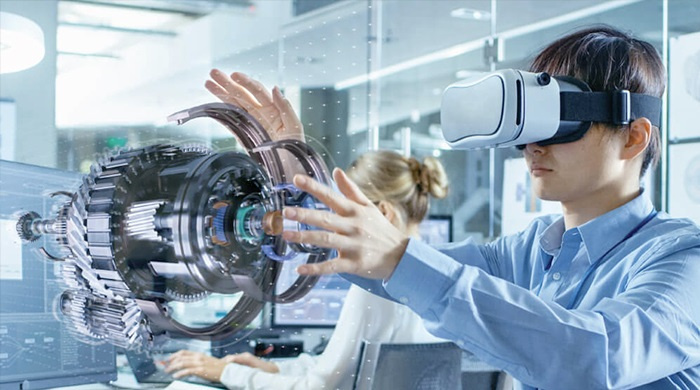Five Benefits of Using Augmented Reality in Product Design
Here are five benefits of using augmented reality (AR) in product design:
Enhanced Visualization and Prototyping: AR allows designers to create virtual prototypes of products and visualize them in real-world environments. This enables designers to explore different design concepts, iterate quickly, and make informed decisions before investing in physical prototypes. By experiencing the product in context, designers can identify potential design flaws, refine details, and ensure that the final product meets user needs and expectations.
Improved Collaboration and Communication: Augmented Reality facilitates collaboration among multidisciplinary teams by providing a shared visual platform for communication and feedback. Designers, engineers, marketers, and other stakeholders can collaborate in real-time, review designs together, and provide input directly within the AR environment. This streamlines the design process, reduces misunderstandings, and fosters a more cohesive and collaborative approach to product development.
Personalized and Interactive User Experiences: AR enables designers to create ar app personalized and interactive user experiences that engage customers and differentiate products in the market. By overlaying digital information, animations, or interactive elements onto physical products, designers can enhance product demonstrations, provide instructional guides, or deliver immersive brand experiences. This not only captivates customers but also helps them better understand product features and benefits.
Cost and Time Savings: AR can significantly reduce the time and cost associated with traditional product design and development processes. By eliminating the need for physical prototypes and mockups, designers can save on materials, production, and testing expenses. Additionally, AR enables rapid prototyping and iteration, allowing designers to explore multiple design variations and concepts in a fraction of the time it would take with traditional methods.
Increased Customer Engagement and Satisfaction: AR enhances customer engagement and satisfaction by offering interactive and immersive experiences that captivate and delight users. Whether through augmented product catalogs, virtual try-on experiences, or interactive product demonstrations, AR enables customers to engage with products in new and exciting ways. This not only drives sales and conversions but also strengthens brand loyalty and fosters positive customer relationships.
In summary, augmented reality offers numerous benefits for product design, including enhanced visualization, improved collaboration, personalized user experiences, cost and time savings, and increased customer engagement. By leveraging AR technology, designers can streamline the design process, create innovative products, and deliver exceptional experiences that resonate with customers and drive business success.
